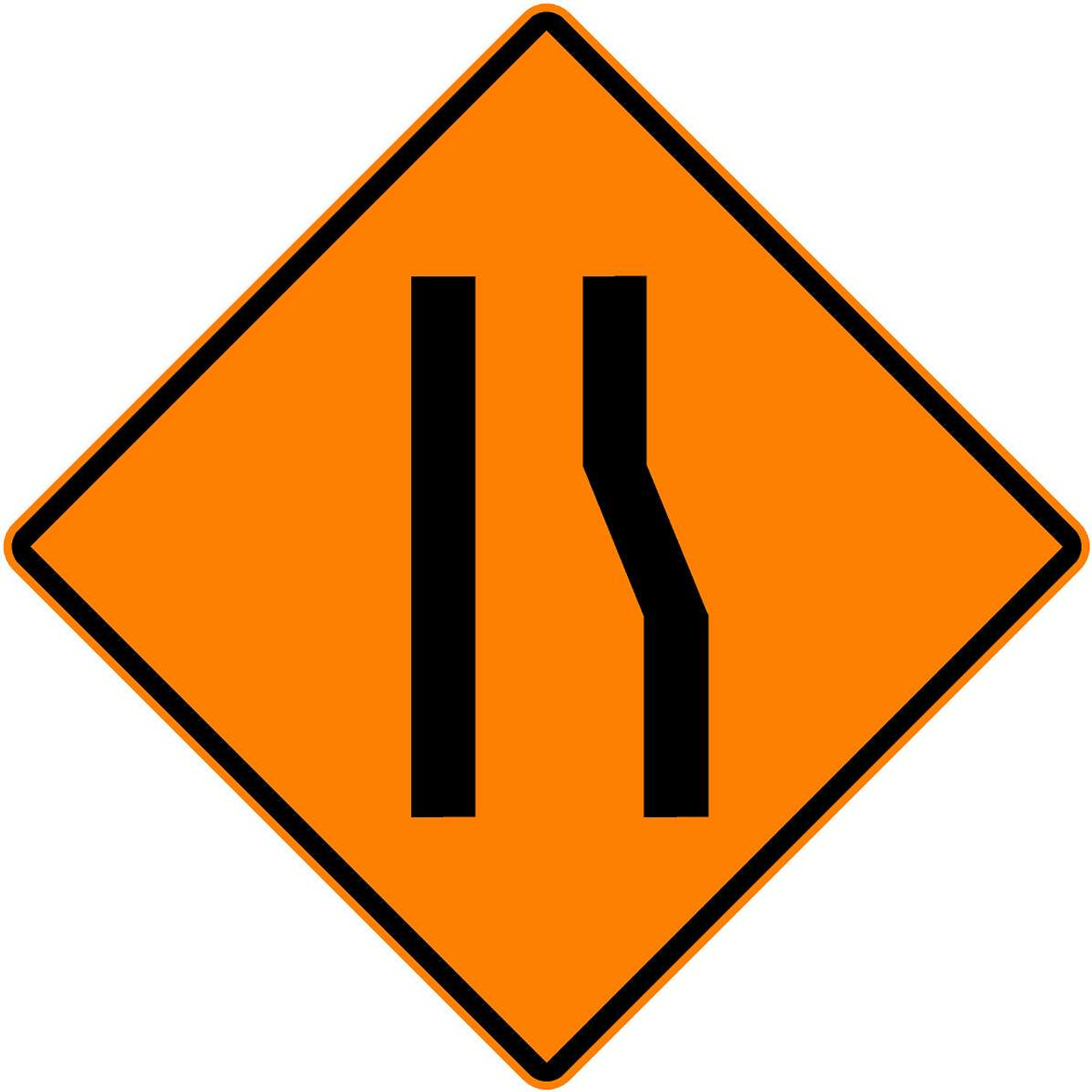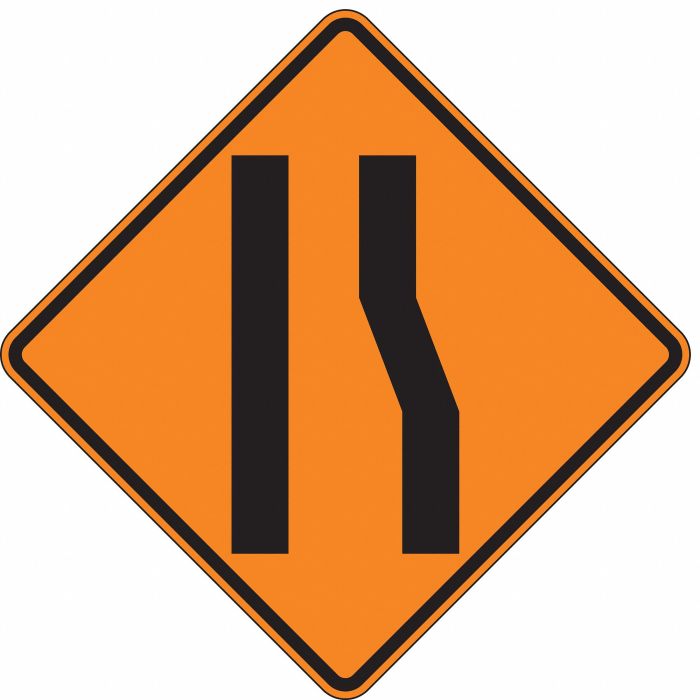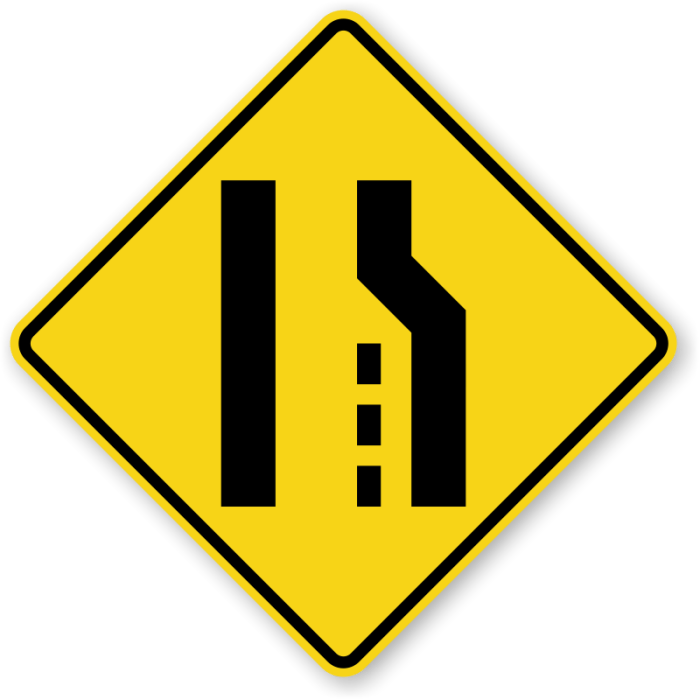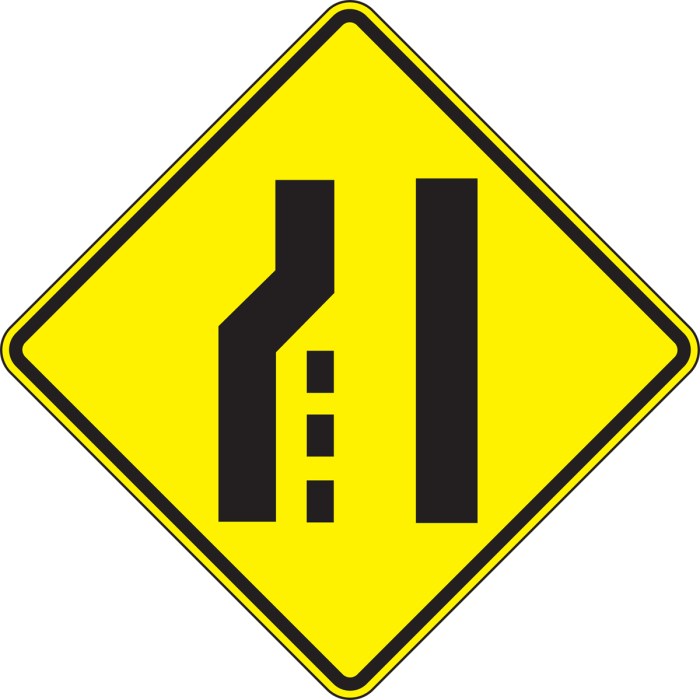Señal de transito fin del carril derecho – The ‘End of Right Lane’ sign, an indispensable element of traffic management, plays a crucial role in ensuring the safety and efficiency of our roadways. Its purpose, design, placement, legal implications, and technological advancements form the tapestry of this comprehensive exploration.
This sign serves as a clear and concise indicator, alerting drivers to the impending termination of a right-hand lane, enabling them to make informed decisions and adjust their driving behavior accordingly.
Definition and Purpose of ‘End of Right Lane’ Sign
The ‘End of Right Lane’ sign is a traffic control device that indicates the approaching termination of the right-most lane on a roadway. Its primary purpose is to provide advance warning to drivers, allowing them to safely merge into the remaining lanes before the right lane ends.
This sign plays a crucial role in traffic management and safety. By providing timely information, it helps drivers anticipate lane closures and adjust their driving behavior accordingly. This reduces the risk of accidents caused by sudden lane changes or vehicles entering a lane that is ending.
Design and Placement of the Sign: Señal De Transito Fin Del Carril Derecho

The ‘End of Right Lane’ sign typically features a black diagonal line on a yellow background, forming an inverted triangle shape. The line is intended to convey the concept of a lane ending and merging.
The sign is typically placed in advance of the lane closure, providing sufficient distance for drivers to notice and react. The exact placement is determined by factors such as the speed limit, traffic volume, and visibility conditions.
Legal Implications and Enforcement

Violating the ‘End of Right Lane’ sign can have legal consequences. Drivers who fail to merge safely or who continue driving in the closed lane may be subject to fines or other penalties.
Enforcement of the sign is typically carried out by law enforcement officers. They may use visual observation, automated systems, or other methods to detect and apprehend violators.
Alternative and Supplementary Signage

In addition to the standard ‘End of Right Lane’ sign, there are various alternative or supplementary signs that may be used in conjunction with it.
- ‘Right Lane Ends’ Sign:Provides a more explicit message than the standard sign.
- ‘Merge’ Sign:Indicates the need to merge into the remaining lanes.
- ‘Zipper Merge’ Sign:Used in areas where traffic from two lanes is merging into one.
These signs work together to provide comprehensive information and guidance to drivers, enhancing traffic flow and safety.
Technological Advancements and the Future of the Sign

Recent technological advancements have led to the development of innovative ‘End of Right Lane’ signs.
- Variable Message Signs (VMS):Can display real-time information, such as the distance to the lane closure or the number of lanes remaining.
- Smart Signs:Use sensors to detect traffic conditions and adjust the sign’s message accordingly.
- Automated Enforcement Systems:Use cameras and other technology to detect and document violations.
These advancements are expected to improve the effectiveness and enforcement of the ‘End of Right Lane’ sign, further enhancing traffic safety.
FAQ Overview
What is the purpose of the ‘End of Right Lane’ sign?
The ‘End of Right Lane’ sign indicates the termination of a right-hand lane, providing drivers with advance notice to prepare for lane changes or merging.
Where are ‘End of Right Lane’ signs typically placed?
These signs are typically placed at the beginning of the lane closure or merge area, providing ample time for drivers to react and adjust their driving.
What are the consequences of ignoring an ‘End of Right Lane’ sign?
Ignoring this sign can result in traffic violations, fines, and potential safety hazards, as it may lead to improper lane changes or collisions.